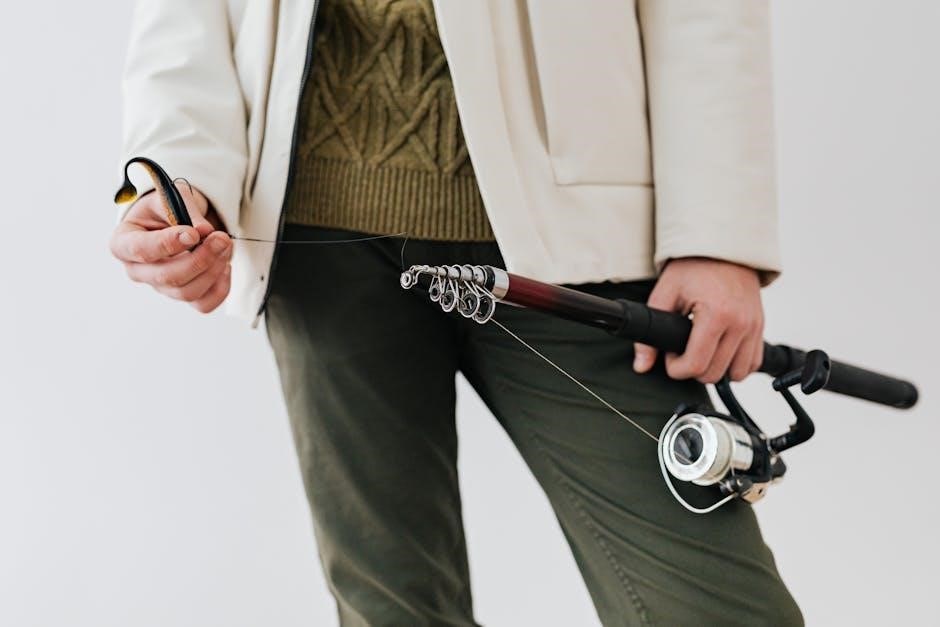
fishing rod length guide
Choosing the right fishing rod length is crucial for casting distance, accuracy, and overall fishing success; This guide explores how rod length impacts performance across various fishing techniques and environments.
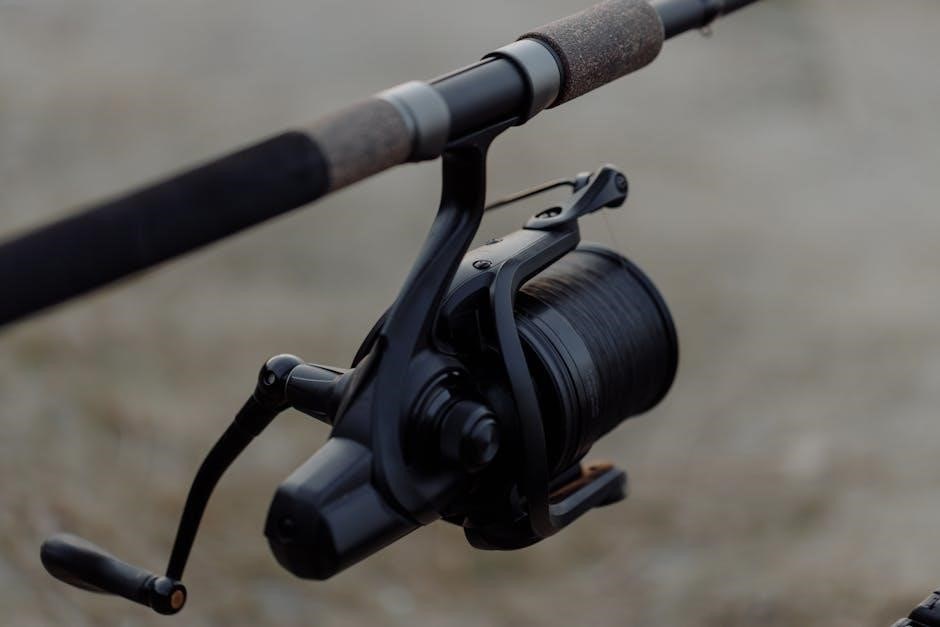
Understanding the Importance of Rod Length in Fishing
Rod length plays a crucial role in determining casting distance, accuracy, and overall fishing performance. A longer rod typically allows for greater casting range but may sacrifice precision, while shorter rods provide better control in tight spaces. The right length enhances sensitivity, helping anglers detect bites more effectively. It also influences leverage when fighting fish, with longer rods offering more power for larger species. Balancing these factors ensures optimal results, making rod length a key consideration for both beginners and experienced anglers.
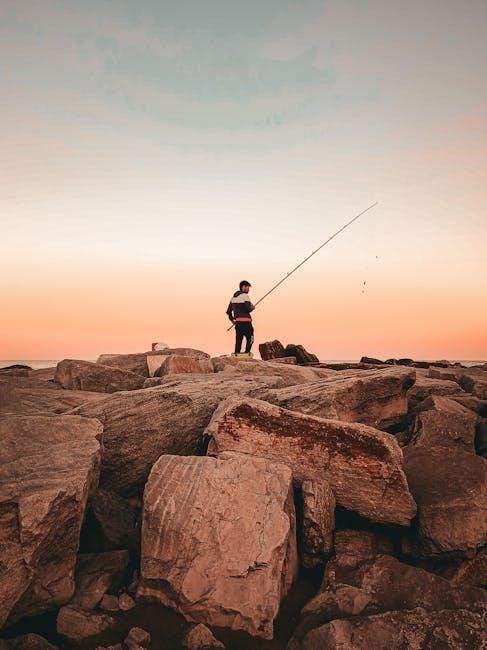
Common Fishing Rod Lengths and Their Uses
Fishing rods vary in length from under 6 feet to over 9 feet, catering to different techniques like ultralight fishing, baitcasting, and surf fishing.
Short Rods (Less Than 6 Feet)
Short rods, measuring under 6 feet, are ideal for tight spaces like small streams or dense vegetation. They offer precise control and accuracy, making them perfect for panfish or trout fishing. Their compact design allows for quick hooksets and effortless maneuverability in close quarters. However, shorter rods sacrifice casting distance, limiting their use in open water or surf fishing. They are a great choice for beginners or anglers targeting smaller species. Despite their limitations, short rods excel in specific scenarios, proving that sometimes less length can be more effective for certain fishing techniques and environments. Their portability is an added advantage.
Medium Rods (6-7 Feet)
Medium rods, ranging from 6 to 7 feet, are the most versatile option for anglers. They strike a balance between casting distance and accuracy, making them suitable for both freshwater and light saltwater fishing. These rods are ideal for targeting species like bass, trout, and walleye. Their moderate length allows for precise casting in smaller areas while still delivering enough power for longer casts. Medium rods are also lightweight and easy to maneuver, making them a favorite among experienced anglers and beginners alike. They are highly adaptable to various fishing techniques, including spinning, baitcasting, and trolling, ensuring a great all-around fishing experience.
Long Rods (7-9 Feet)
Long rods, ranging from 7 to 9 feet, are ideal for applications requiring greater casting distance and leverage. They are commonly used in saltwater fishing, surf fishing, and trolling, where reaching farther into the water is essential. These rods provide more power and control when battling larger species like salmon or striped bass. Their extended length also helps manage heavier lines and lures, making them suitable for deep-water fishing. While they offer excellent casting performance, longer rods can be less accurate in tight spaces and may be more challenging to handle for beginners. They are a great choice for experienced anglers seeking precision and strength in open-water conditions.
Extra-Long Rods (Over 9 Feet)
Extra-long rods, exceeding 9 feet, are specialized tools designed for maximum casting distance and control in specific fishing scenarios. These rods are often used in surf fishing, pier fishing, and certain types of saltwater fishing where reaching distant schools of fish is necessary. Their extended length allows for more powerful casts and better line management, making them ideal for handling large species like tuna or marlin. However, their size and weight can make them cumbersome in tight spaces or for inexperienced anglers. Extra-long rods require more strength and technique to handle effectively, but they deliver exceptional performance in open-water environments where distance is critical.
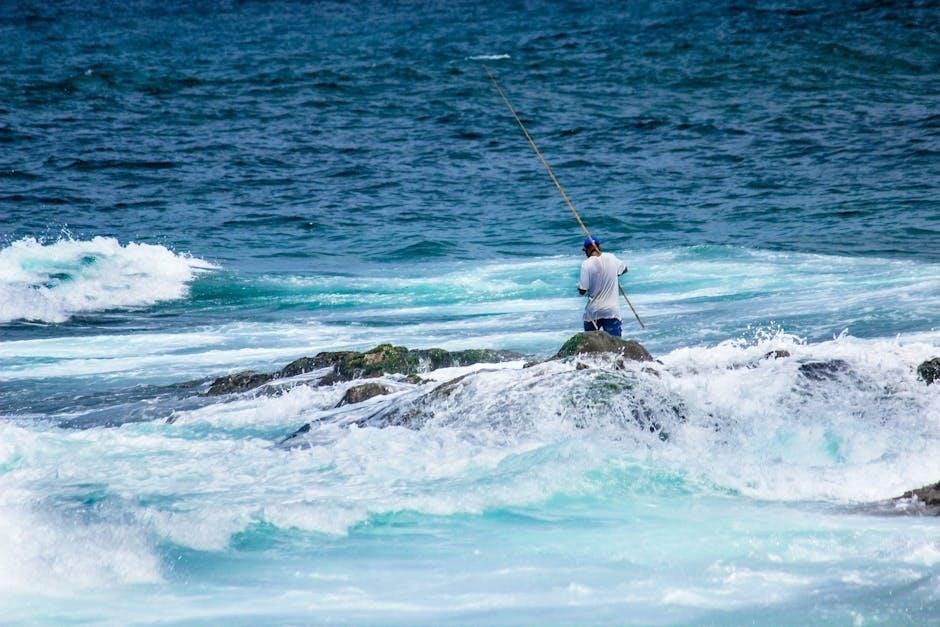
Factors Influencing the Choice of Rod Length
The choice of rod length is influenced by casting distance, accuracy requirements, fishing technique, target species, and fishing environment, ensuring optimal performance for specific angling needs.
Fishing Technique and Application
The fishing technique and application significantly influence rod length selection. For example, baitcasting and spinning require different rod lengths due to varying casting styles. Shorter rods (5-6 feet) are ideal for close-quarters accuracy and precision casting, while longer rods (7-9 feet) enhance casting distance and control for techniques like fly fishing or surf fishing. Additionally, rod action (fast, medium, or slow) must align with the technique, as it affects sensitivity and hook-setting power. The intended use, whether for light tackle or heavy-duty trolling, also dictates the optimal rod length, ensuring efficiency and effectiveness in specific fishing scenarios.
Target Species and Fishing Environment
The target species and fishing environment play a vital role in selecting the appropriate rod length. Larger species like musky or salmon require longer rods (7-9 feet) to handle heavier lines and greater fighting power. Conversely, smaller species such as panfish or trout are best targeted with shorter rods (5-6 feet) for precision and sensitivity. The fishing environment also matters: shore fishing may benefit from medium-length rods (6-7 feet) for balance, while boat fishing can accommodate longer rods for increased reach and control. Understanding these factors ensures anglers choose rods that match their specific needs for optimal performance and success.
Casting Distance and Accuracy Requirements
Casting distance and accuracy are significantly influenced by rod length. Longer rods (7-9 feet) generate more power, enabling longer casts, which is ideal for surf fishing or beach casting. Shorter rods (under 6 feet) excel in tight spaces, offering precision for panfish or small stream trout. Medium-length rods (6-7 feet) strike a balance, providing both decent casting distance and accuracy, making them versatile for various fishing scenarios. The right rod length ensures anglers can meet their casting needs, whether targeting species in open waters or navigating confined environments, ultimately enhancing their fishing experience and success rate. Proper selection is key to achieving desired results.
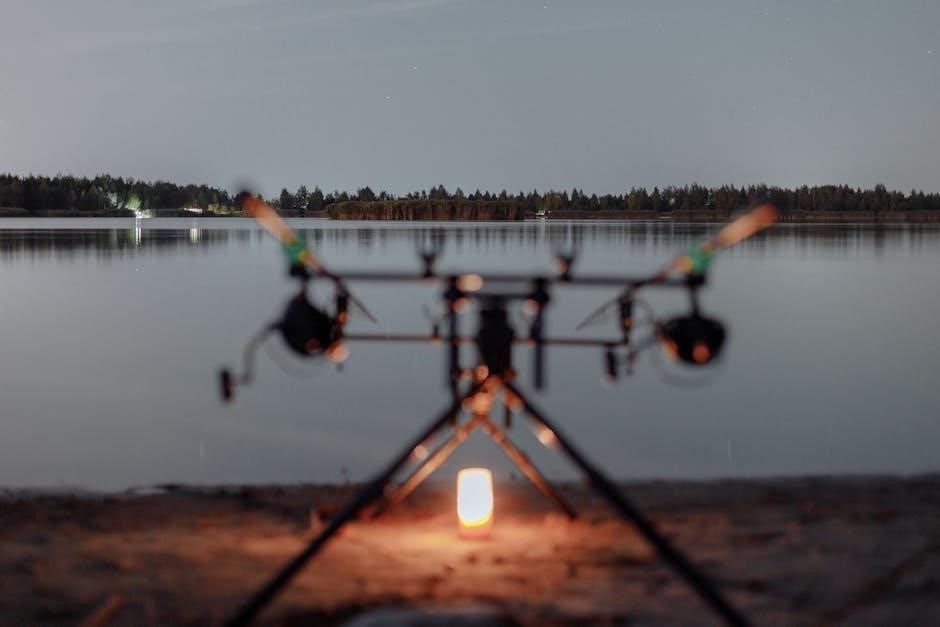
Popular Fishing Types and Recommended Rod Lengths
Different fishing types require specific rod lengths. Ultralight fishing often uses rods under 6 feet, while surf fishing may require rods over 9 feet for maximum casting distance.
Freshwater Fishing Rod Lengths
Freshwater fishing typically uses rods between 6 to 7 feet for balanced performance. Shorter rods (under 6 feet) excel in tight spaces, offering precision for panfish or trout. Medium-length rods (6-7 feet) are versatile for bass, walleye, or trout, providing moderate casting distance and control. Longer rods (7-9 feet) are ideal for open waters, such as lakes or rivers, where casting distance is crucial. Ultralight rods (5-6 feet) are perfect for small species, while longer rods enhance sensitivity and reach for larger fish. The right length depends on the target species, fishing location, and desired casting range.
Saltwater Fishing Rod Lengths
Saltwater fishing often requires longer rods to handle larger fish and heavier lines. Rods typically range from 7 to 9 feet, with some surf fishing rods reaching up to 12 feet for maximum casting distance. Longer rods provide greater leverage when fighting strong species like marlin or tuna. For boat fishing, shorter rods (6-7 feet) are preferred due to limited space and the need for precision. The length choice depends on the fishing method, target species, and environment. Longer rods excel in open waters, while shorter ones are ideal for boat or pier fishing, ensuring effective hook sets and control.
Ultralight Fishing Rod Lengths
Ultralight fishing typically uses shorter rods, ranging from 4 to 6 feet, designed for precision and sensitivity. These compact rods excel in small water bodies like streams or ponds, making them ideal for targeting panfish, trout, and other small species. Shorter lengths improve accuracy when casting small lures or bait, while also enhancing the fight experience with lighter fish. The reduced size makes them highly portable and easy to maneuver in tight spaces. While longer ultralight rods (up to 7 feet) exist for slightly greater casting range, the standard remains under 6 feet for optimal ultralight performance and control.
Surf Fishing Rod Lengths
Surf fishing rods are typically longer, ranging from 9 to 12 feet, to achieve greater casting distance in ocean conditions. Longer rods help anglers reach farther into the surf, increasing the chances of hooking larger species like striped bass or sharks. Rods in the 9-10 foot range are ideal for most surf fishing scenarios, balancing casting power and manageability. Extra-long rods (12+ feet) are used by experienced anglers for extreme distance but can be cumbersome. The added length also provides leverage for fighting strong, large fish in currents. Choosing the right length depends on the target species, wave conditions, and personal preference for handling.
Match rod length to your fishing type, target species, and personal comfort. Test different lengths and consider expert advice to find your ideal rod for success on the water.
Expert Recommendations for Choosing the Right Rod Length
Experts suggest testing different rod lengths to find what suits your fishing style. Consider the type of fishing, target species, and environment. Medium-length rods (6-7 feet) are often recommended for versatility. Paul Glass of Burly Fishing emphasizes understanding your needs and preferences. Tom Rosenbauer, author of the Orvis Guide, highlights the importance of balancing casting distance and accuracy. Start with a standard length, then adjust based on performance. Personal comfort and ease of handling are equally important. Ultimately, the right rod length is one that enhances your fishing experience and helps you achieve your goals on the water.